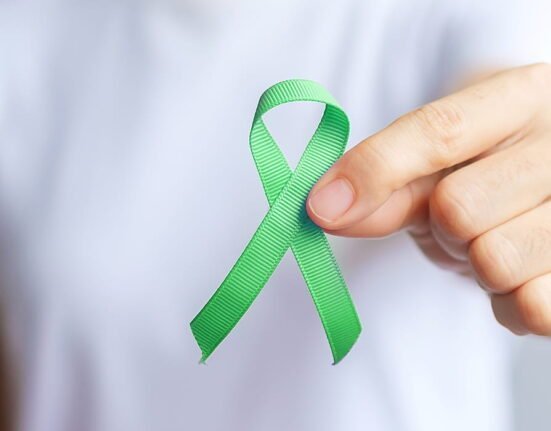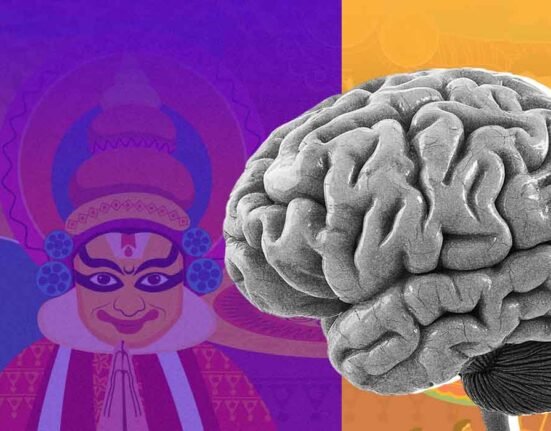Think of moving through life with a pair of invisible spectacles that colour every experience, relationship and choice. These “spectacles” are our core beliefs—unconscious assumptions about the self, other people and the world. Often developed during childhood, they work below our level of awareness, quietly shaping our thoughts, feelings and actions. Whether they quietly say “I’m worthy of love and respect” or “People can’t be trusted”, these kinds of beliefs either imprison or liberate us. To understand and modify them when required is essential to personal development and mental health.
The Origin and Nature of Core Beliefs
Core beliefs are fundamental assumptions that shape the way individuals view themselves, other individuals and the world. Such beliefs tend to be global, affecting a broad range of life experiences and situations. They are also often inflexible, immune to new information and overgeneralized, in that they make broad conclusions from particular occurrences. For instance, someone who was neglected as a child might internalise the belief “I’m unlovable”, which can persistently influence their interpersonal relationships, emotional regulation and self-esteem throughout life. Such beliefs act like internal schemas or cognitive templates that influence how people process and interpret incoming information.
Formation of core beliefs begins early in life and is greatly determined by multiple experiences with and reinforcements from primary caregivers, attachment in early relationships, cultural norms and environment. Experiences of secure love, validation and support are likely to build adaptive core beliefs such as “I am worthy” or “The world is a safe place”. Conversely, traumatic or adverse experiences such as neglect, abuse, bullying or criticism from parents may lead to the formation of maladaptive beliefs such as “I am weak” or “People can’t be trusted” (Beck, 2005; Young et al., 2003). Once established, these beliefs tend to be self-perpetuating.
Three mental processes support these fundamental beliefs: selective attention, confirmation bias and behavioural reinforcement. Selective attention makes people only pay attention to evidence consistent with their beliefs and reject evidence that is contrary. For instance, a person believing “I am incompetent” will disregard his or her achievements and only notice small errors. Confirmation bias reinforces the loop by making people perceive ambiguous situations in ways that confirm their beliefs. Behavioural patterns like avoidance, perfectionism, or aggression also serve as reinforcers and hence are hard to shake. Since core beliefs exist mostly outside conscious awareness, they go unchallenged unless brought into awareness by introspection or therapeutic intervention (Disner et al., 2011).
You might like: The Role of Introspection in Overcoming Cognitive Biases
The Role of Core Beliefs in Perception
Core beliefs serve as internal filters by which a person processes and judges their experiences. Similar to coloured spectacles, they screen reality so that frequently what we observe gets distorted, even from the objective truth, and influences not only what we see but also the way we think and react to situations. For instance, someone carrying the perception “I’m a failure” might see even the smallest error, like forgetting to reply to an email or getting mild constructive criticism, happen as a personal disaster. This account not only intensifies feelings of inadequacy and worthlessness but also maintains the original belief, creating a self-perpetuating cognitive cycle.
Neutral or ambiguous events are thus frequently misinterpreted according to preexisting core beliefs, leading to chronic doubt about the self and emotional instability (Clark & Beck, 2010). Further still, the emotional consequences of core beliefs are significant. Core beliefs tend to dictate the strength and direction of emotional responses. Negative core beliefs, especially, are linked strongly with psychological illnesses like anxiety, depression, and borderline personality disorder.
For example, an individual holding the belief “The world is dangerous” can get hypervigilant, anxious, or suspicious even in fairly safe situations. They might respond to social interactions as threatening or infer ill motives in other people’s actions, which again can lead them to withdraw socially or be hostilely defensive. These skewed views not only have an impact on one’s internal world but can also damage relationships and everyday functioning. Eventually, the ongoing emotional suffering due to such beliefs could lead to physiological symptoms, such as increased levels of cortisol or impaired sleep, further decaying well-being (Beck, 2005; Disner et al., 2011).
Finally, the power of core beliefs to shape perception highlights the value in making these beliefs conscious. Without an awareness of their potency, people can unwittingly live in a skewed world constructed by outmoded or inappropriate stories based on past suffering, not current reality.
Core Beliefs and Behavioural Patterns
Core beliefs don’t just shape how we see the world—they control the choices that we make, the behaviours we develop, and how we engage with other people. These inherent convictions operate like internalised rules or schemas and operate unconsciously to impose patterns of conduct. For example, a person who believes “I need to be perfect to be accepted” would practice unrelenting perfectionism, having hyper-exaggerated standards, and dreading the slightest failure.
They would shun challenges or new options altogether to avert the threat of not being perfect. This leads to perpetual stress, emotional exhaustion and burnout, and reinforces feelings of inadequacy. In the long term, the person can become stuck in a cycle of overdoing and self-blame, always trying to live up to unattainable ideals without ever feeling a sense of satisfaction (Flett & Hewitt, 2002).
Additionally, views about others strongly influence social behaviours and interpersonal relationships. A fundamental belief like “People will hurt me” can create avoidant or defensive behaviour, manifesting as emotional avoidance, mistrust, or oversensitivity in relationships. This can hinder the formation of deep, meaningful relationships and reinforce social isolation. Even in nurturing contexts, individuals who hold such beliefs may perceive other people’s behaviour as fake or dangerous and react with suspicious or hostile behaviour. Adaptive core beliefs such as “People are basically kind” or “I deserve to be loved,” however, promote openness, trust, and pro-social behaviour. Such beliefs are able to build resilience, enable good communication, and enhance relational satisfaction (Young et al., 2003).
Across the world, the behavioural outworkings of core beliefs become self-fulfilling: individuals behave in a manner whereby they get the very reaction they anticipate or dread. It is important to identify and change such behavioural patterns for the purpose of breaking up unhealthy cycles and creating more wholesome relationships and life decisions.
Assessing and Modifying Core Beliefs
Core beliefs are ingrained assumptions we hold about ourselves, others, and the world. Their identification and alteration are a prime focus of Cognitive Behavioural Therapy (CBT), as they play an important role in shaping our feelings and behaviours (Beck et al., 1979).
Identifying Core Beliefs
Identifying the core beliefs is the initial step towards changing them. It requires self-awareness and introspection to acknowledge the underlying assumptions that influence our behaviours and thoughts. Journaling may enable people to search for patterns and intruding thoughts. Therapists use strategies like the “downward arrow” technique, where questions are used to follow automatic thoughts back to the underlying core beliefs. For instance, the consideration “I can’t get anything right” may betray a covert belief that “I’m incompetent” (Beck et al., 1979).
Cognitive Restructuring
Core beliefs, once they are identified, can be disputed and changed through cognitive restructuring. This is accomplished by reviewing evidence for and against a given belief, reviewing alternative hypotheses, and constructing more realistic and balanced beliefs. For example, if one holds the belief “I’m unlovable”, they would be asked to recall when they had felt loved or appreciated, thus contradicting the accuracy of their negative belief. With repetition over time, this becomes a way of weakening maladaptive beliefs and reinforcing more adaptive ones (Clark & Beck, 2010).
Behavioural Experiments
Behavioural experiments are another valuable method in CBT for changing core beliefs. They involve checking on whether or not a belief is true by trying it in real life. For instance, a person who holds the belief “If I give an opinion, people will reject me” could be asked to do so in a safe environment and see what happens. Positive experiences can yield evidence against the negative belief, resulting in its revision. Such experiential learning allows a person to collect tangible data contradicting his or her maladaptive beliefs (Verywell Mind, 2020).
Positive Data Logs
A positive data log is an effective technique for strengthening new, adaptive beliefs. This entails keeping a record of each day’s experiences, supporting a more constructive belief in oneself. For example, if one is working with the belief “I’m competent,” one would record times when one completed a task or received good feedback. Over time, building up this evidence can become stronger than the old and bring down the old one (Psychology Tools, 2024).
Mindfulness and Acceptance
Integrating acceptance and mindfulness strategies may also assist with changing underlying beliefs. Mindfulness is watching one’s thoughts and feelings but without judgment, so they know their maladaptive beliefs without getting caught up in them. Acceptance strategies encourage individuals to face their experiences without conflict, thus making space for new, more adaptive beliefs to emerge (Hayes et al., 2011).
The Role of Therapy
Although self-help techniques are helpful, engagement with a trained therapist can be even more helpful. Therapists can individualise interventions to a client’s unique needs, track progress, and modify techniques as needed. They can also offer a supportive and safe context for confronting and challenging deeply entrenched beliefs (Beck et al., 1979).
Reform of core beliefs is a complicated sequence of recognising dysfunctional thinking, arguing with and restating them, trying them out in experiments of behaviour, reinforcing new notions on the basis of positive data, and utilization of mindfulness and acceptance methods. Through dedication and support, individuals can alter core beliefs, leading to improved emotional functioning and more adaptive behaviours (Beck et al., 1979; Hayes et al., 2011).
Conclusion
Core beliefs are highly powerful in shaping our way of perceiving things, feeling about things, and acting towards things. Even though they can be strongly entrenched, they are not set in stone. By bringing these beliefs into awareness, challenging their validity, and constructing more helpful alternatives, we are able to rethink our inner script. Self-inquiry and change do not merely enhance mental health but also allow us to lead more fulfilling lives.
FAQs
1. What are core beliefs, and how do they affect our daily lives?
Core beliefs are deep, often unconscious assumptions we hold about ourselves, others, and the world. They act like invisible lenses, shaping how we interpret experiences, manage emotions, and make decisions—often without us realising it.
2. How are core beliefs formed?
Core beliefs typically develop during childhood through repeated experiences, especially in relationships with caregivers. They are shaped by emotional interactions, cultural messages, and early life events, and can be either positive or negative.
3. Why do core beliefs remain unchanged even when evidence contradicts them?
Core beliefs persist due to selective attention, confirmation bias, and reinforcement through behaviour. People unconsciously seek and focus on information that supports their beliefs while ignoring or dismissing contradictory evidence.
4. How do negative core beliefs impact mental health?
Negative core beliefs can distort perception and trigger intense emotional reactions. They are linked to mental health issues like anxiety, depression, and relationship difficulties, often reinforcing cycles of self-doubt and maladaptive behaviour.
5. Can core beliefs be changed, and if so, how?
Yes, core beliefs can be changed through self-reflection and therapeutic techniques such as cognitive restructuring, behavioural experiments, positive data logs, and mindfulness practices. These help individuals challenge and replace harmful beliefs with healthier ones.
6. What role does therapy play in changing core beliefs?
Therapy provides a structured, supportive environment to uncover, test, and transform core beliefs. Techniques from Cognitive Behavioural Therapy (CBT) and Acceptance and Commitment Therapy (ACT) help individuals develop more adaptive perspectives and behaviours.
References +
- Beck, A. T. (2005). Cognitive therapy and the emotional disorders. Penguin.
- Beck, A. T., Rush, A. J., Shaw, B. F., & Emery, G. (1979). Cognitive therapy of depression. Guilford Press.
- Clark, D. A., & Beck, A. T. (2010). Cognitive therapy of anxiety disorders: Science and practice. Guilford Press.
- Disner, S. G., Beevers, C. G., Haigh, E. A. P., & Beck, A. T. (2011). Neural mechanisms of the cognitive model of depression. Nature Reviews Neuroscience, 12(8), 467–477. https://doi.org/10.1038/nrn3027
- Flett, G. L., & Hewitt, P. L. (2002). Perfectionism and maladjustment: An overview of theoretical, definitional, and treatment issues. In G. L. Flett & P. L. Hewitt (Eds.), Perfectionism: Theory, research, and treatment (pp. 5–31). American Psychological Association. https://doi.org/10.1037/10458-001
- Hayes, S. C., Strosahl, K. D., & Wilson, K. G. (2011). Acceptance and commitment therapy: The process and practice of mindful change (2nd ed.). Guilford Press.
- Psychology Tools. (2024). Positive data logs. https://www.psychologytools.com/resource/positive-data-log/
- Verywell Mind. (2020). Behavioural experiments in CBT. https://www.verywellmind.com/behavioural-experiments-in-cognitive-behavioural therapy-3024397
- Young, J. E., Klosko, J. S., & Weishaar, M. E. (2003). Schema therapy: A practitioner’s guide. Guilford Press.













Leave feedback about this